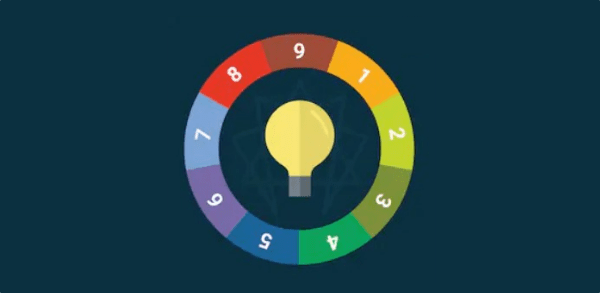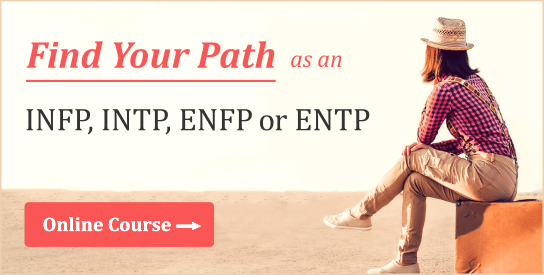
Archetypes and Enneagram types share a great deal in common. One might even argue that they are describing the same basic types but are merely assigning them different names. Considering my longstanding interest in foundational theories of personality, the idea that the types enumerated by different personality models are pointing to the same underlying realities is of great appeal, animating (among other things) my work on Myers-Briggs – Enneagram correlations.
Both archetypes and Enneagram types can be viewed as attempting to capture the most pervasive and essential life roles enacted by human beings. Each type is like a member of a team, possessing its own set of skills and roles. In theory, if we were to bring together a group of people in which all types were represented, we would have the requisite building blocks for a basic human society. So while each type can be studied on its own right, it’s also useful to consider its societal functions and contributions.
In this post, we will explore the correlations between some of the most well-known archetypes and the nine Enneagram types. In many cases, the correlations are immediately clear and straightforward. In others (e.g., Enneagram 1), they are less so and require a bit more interpretative liberty. Nonetheless, I hope you enjoy exploring the myriad overlaps between these two systems and what they tell us about the diverse (yet predictable) manifestations of the human psyche.
Enneagram 1: The Hero Archetype

Description: Purposeful, principled, committed.
The Hero is one of the broadest and most ubiquitous archetypes. You may be familiar with Joseph Campbell’s notion of “monomyth,” also known as the Hero’s Journey, which he saw as a sort of universal template for human mythology. Hence, given the right narrative context, any archetype might be depicted and understood as a heroic character.
That said, I see the hero as the best fit (at least among the more commonly known archetypes) for the Enneagram 1. More specifically, Ones are inclined to be moral heroes. They strive to convince others of a better way of living, one aligned with objective moral truth.
In literature, Ones are your typical “good guys,” standing up for what is right and just. Owing to their to strong sense of conscience and moral conviction, Ones tend to be mission-minded, seeing themselves as heroes or champions for their chosen cause.
Enneagram 2: The Caregiver Archetype

Description: Caring, compassionate, giving.
The Enneagram 2, also known as “The Helper,” typically enacts the archetypal Caregiver role. In their book, Personality Types, Don Riso and Russ Hudson enumerate common Two characteristics:
Empathetic, compassionate, feeling with and for others. Caring and concerned about their needs. Outgoing and passionate, they offer friendship and kindness. Thoughtful, warm-hearted, and encouraging.
In Myers-Briggs vernacular, Twos tend to be feeling (F) types. They lead with their heart and values, often prioritizing the needs of others above their own.
Enneagram 3: The Warrior Archetype

Description: Driven, competitive, success-oriented.
Warriors will do whatever it takes to win and excel. They invest a great deal of time and energy honing their skills, hoping their investment will yield big results in the form of achievement and recognition.
Likewise, the Enneagram 3, often called “The Achiever,” is deeply motivated by status and success, strenuously climbing whatever ladder they find themselves on.
Threes are both intrinsically and extrinsically motivated. They relish the experience of a good challenge, but may be unmotivated if it doesn’t come with the added bonus of external rewards and recognition.
Enneagram 4: The Creator Archetype

Description: Introspective, imaginative, creative.
Creators enjoy the creative process for its own sake. They are deeply imaginative, but also compelled to materialize their dreams and ideas in the outside world. In Myers-Briggs parlance, they aim to translate their intuitions (N) into tangible (S) form.
The Enneagram 4, commonly dubbed “The Artist,” is arguably the most creative of the Enneagram types.
While Fours are sometimes derailed by perfectionism, negative emotions, or excessive rumination, they have a deep need for creative self expression—be it through words, images, or physical objects.
Enneagram 5: The Sage Archetype

Description: Studious, conceptual, investigative.
Sages embrace and embody the notion that “knowledge is power.” While other types may turn away from truth, especially that which is difficult or inconvenient, Sages intrepidly seek it out and confront it.
The Enneagram 5, often called “The Investigator,” is cut from the same cloth. Fives exhibit great curiosity toward how the world works. Many operate like scholars, philosophers, or scientists. They rely on data, observations, and theoretical insights to gain a clearer picture of objective reality.
In contrast to Warriors and Heroes, Sages typically shy away from the front lines of life, preferring to function as observers rather than foot soldiers. They believe that action should be preceded and informed by a deep understanding of the “big picture” and all its complexities.
Enneagram 6: The Orphan Archetype

Description: Wary, conforming, hard-working.
Orphans aren’t always sure where they fit in or whether life is ultimately working in their favor. Their perceived situation is not unlike that of the “middle child,” many of whom feel overshadowed by their older or younger siblings. Hence, both the Orphan and Enneagram 6 turn to outside groups or ideologies—social, professional, political, religious, or otherwise—to assuage their underlying insecurities.
These types are also skeptical and self-reliant. Their level of trust in anyone or anything outside themselves is limited, so they work hard to ensure their needs are met. They’re well-described as “survivors.” While typically not obvious standouts, they’re scrappy enough to procure whatever they need to keep their heads above water.
Sixes are usually Myers-Briggs sensors (S) and one of the most commonly encountered Enneagram types. Like worker bees, they can plug in wherever required, making them indispensable to the everyday operations of society.
Enneagram 7: The Jester & Explorer Archetypes

Description: Curious, fun-loving, explorative.
Both the Enneagram 7 and the Jester Archetype aim to keep things fun and interesting. They don’t take life too seriously and work to ensure that others don’t either.
These types remind us of the importance of humor and play in human life—childlike capacities that other types may downplay or repress. They help us to laugh and relax, to release some of the stresses and burdens inherent to modern life.
Sevens also crave novelty and adventure. They show us the value of trying new things, even when scary or unsettling. Hence, the Enneagram 7 not only makes for a great Jester, but also a worthy representative of the Explorer archetype.
Enneagram 8: The Ruler Archetype

Description: Confident, commanding, assertive.
The Enneagram 8, sometimes nicknamed “The Boss” or “The Challenger,” perfectly squares with the Ruler archetype. Eights are the most dominant of all types and prefer being in charge. They naturally gravitate to positions of power, leadership, and authority.
Their importance in tribes and societies almost goes without saying. Strong leaders help provide the requisite vision and direction for a group. Moreover, they ensure that resources— both human and material— are effectively organized and utilized. They also display the courage and willingness to make the tough decisions that others are reluctant to make.
Enneagram 9: The Innocent Archetype

Description: Humble, adaptable, conflict-avoidant.
The Enneagram type 9 is commonly known as “The Peacemaker.” However, as I point out in my post on the Enneagram 9, this type might be better described as the “Peace Lover,” since their means of procuring peace is often more passive than active.
Like those of the Innocent archetype, Nines prefer to avoid dwelling on the negative or disquieting aspects of life. They eschew conflict and turn away from uncomfortable realities in order to maintain a state of inner peace and optimism. As Riso and Hudson remark, Nines “don’t want to be affected by the environment…They would rather ignore whatever is wrong so that their tranquility will not be disturbed.”
While downplaying or disregarding problems is not without negative consequences, society can and does benefit from Nines’ spirit of hope and optimism. Nines show us how to appreciate and find contentment in life’s simple pleasures, regardless of how bad things may sometimes seem.
Learn More in Our Online Course & Books:
Finding Your Path as an INFP, INTP, ENFP or ENTP
My True Type: Clarifying Your Personality Type…
Related Posts:
Myers-Briggs-Enneagram Correlations
Enneagram Profiles: Type 1 | Type 3 | Type 4 | Type 5 | Type 6 | Type 7 | Type 9

J Robb Wilson says
Unique and helpful. Thanks…
A.J. Drenth says
Nice to hear you enjoyed the post.
Annais says
Interesting post. Do you equate some numbers with immature subtypes of archetypes on purpose? Jester is an immature magician (sage) and hero is immature warrior for example. So I could imagine this being applicable since the enneagram talks of childhood wounding origin, however it is not clear why some seem to be equated with immature or shadow versions of archetypes. (the Ruler seems to sound as a tyrant king, since mature king would sacrifice for the sake of other). I am not sure if 4 is not an orphan, since the core wound is abandonment?
A.J. Drenth says
Hello Annais,
I wasn’t intending to convey degrees of respective health for the types. While some systems may classify certain archetypes as more healthy / mature, others do not. You make a good point about the Four being a potential candidate for the Orphan archetype. However, I also saw the Orphan as a good fit for the Six and the Creator for the Four.